Everything you ever wanted to know about maki
Summary:
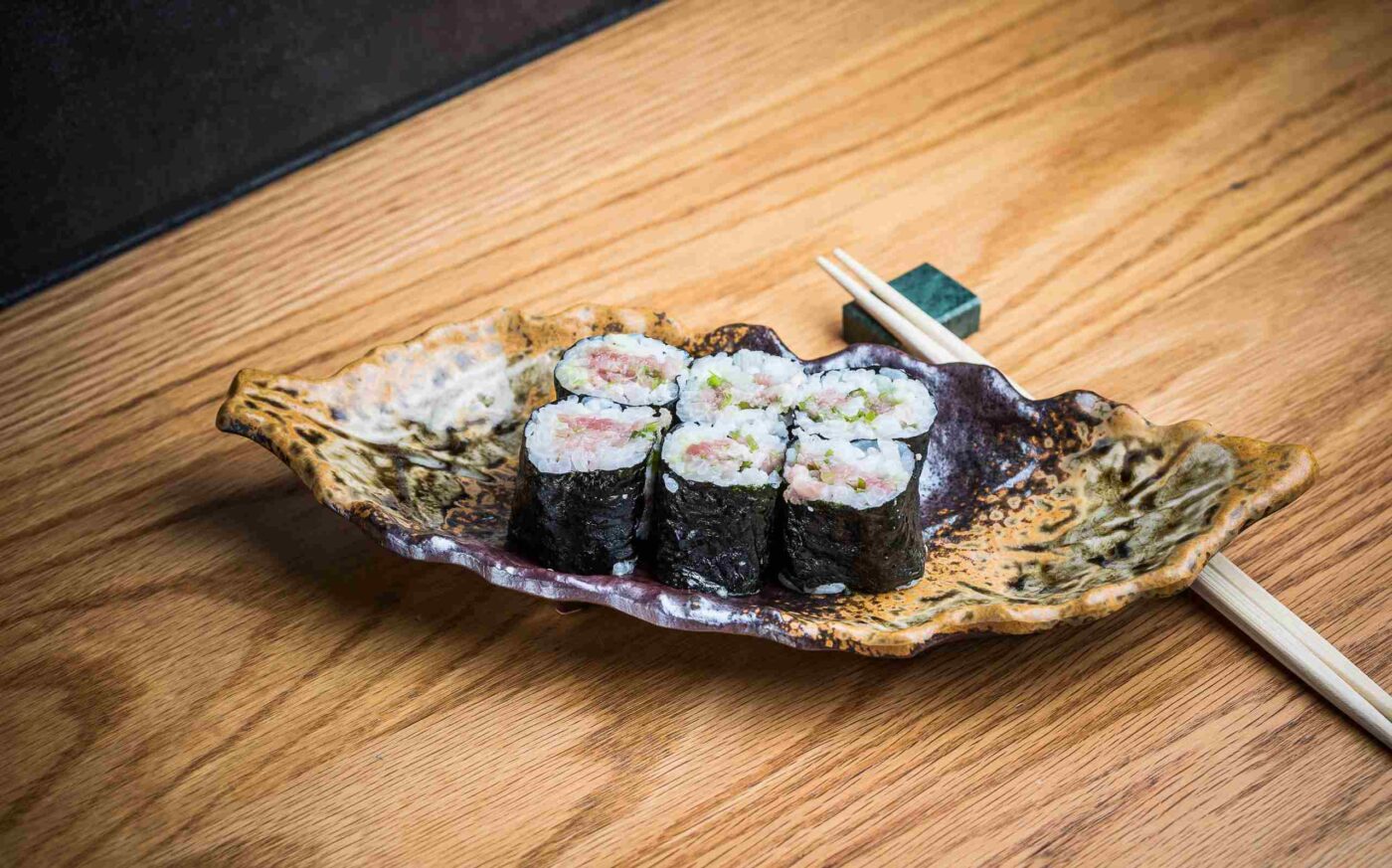
A logbook by Sensei Hiroshi Umi.
Maki. Sushi roll play. A slice of fun with infinite combinations, and bluefin tuna very much a feature of many. This is one of the most popular and widely eaten forms of sushi in our fast-paced digital era (one need only take a look at some feverish Instagram accounts), but that enjoys a long, fertile tradition in the more measured history of Japanese cuisine.
The history of the Maki
Some claim they were initially made by Buddhist monks back in the 13th century, although more reliable sources suggest that the term was mentioned for the first time in the cookery book Delights of the Mountains and Seas (by one Ryōri Sankaikyō), published in 1750, in other words at the end of the magnificent Edo era, a period of enlightenment in Japanese cooking. A couple of decades later, gastronomic archaeologists uncovered the term makisuzhi in a tome entitled Menu Categories, written by Shinsen Kondate buruishu in 1776. Here the author explained the process step-by-step. “Place a sheet of Asakusa-nori (nori seaweed from the Asakusa district in Taito, Tokyo), fugu (blowfish) skin or paper on the makisu and spread the boiled, vinegared rice, then place the fish and roll the mat firmly from one end to another”.
A later book by Meihan Burui (1802) likewise details the process to prepare makizushi: “Spread asakusa-nori on the board, and place the sushi rice. The ingredients are sea bream, abalone, shiitake, mitsuba (Japanese wild chervil) and shiso. Some ancient accounts tell the tale that makisushi was invented for a group of customers, somewhat ill-tempered after drinking sake, who complained that the rice from the sushi they were eating stuck to their fingers. The edible wrapping of nori seaweed dealt with this finger food problem. Over time it spread throughout Japan, with the wrapping varying from one region to another. In coastal regions, for example, kelp seaweed was available, while in mountain lands, cured takana mustard leaves were used. The ingredients most commonly included in makisushi likewise extended beyond fish to include rolled-up omelette (tamagoyaki), and such vegetarian options as kanpyo (dried shavings of pumpkin), carrot, spinach, etc.
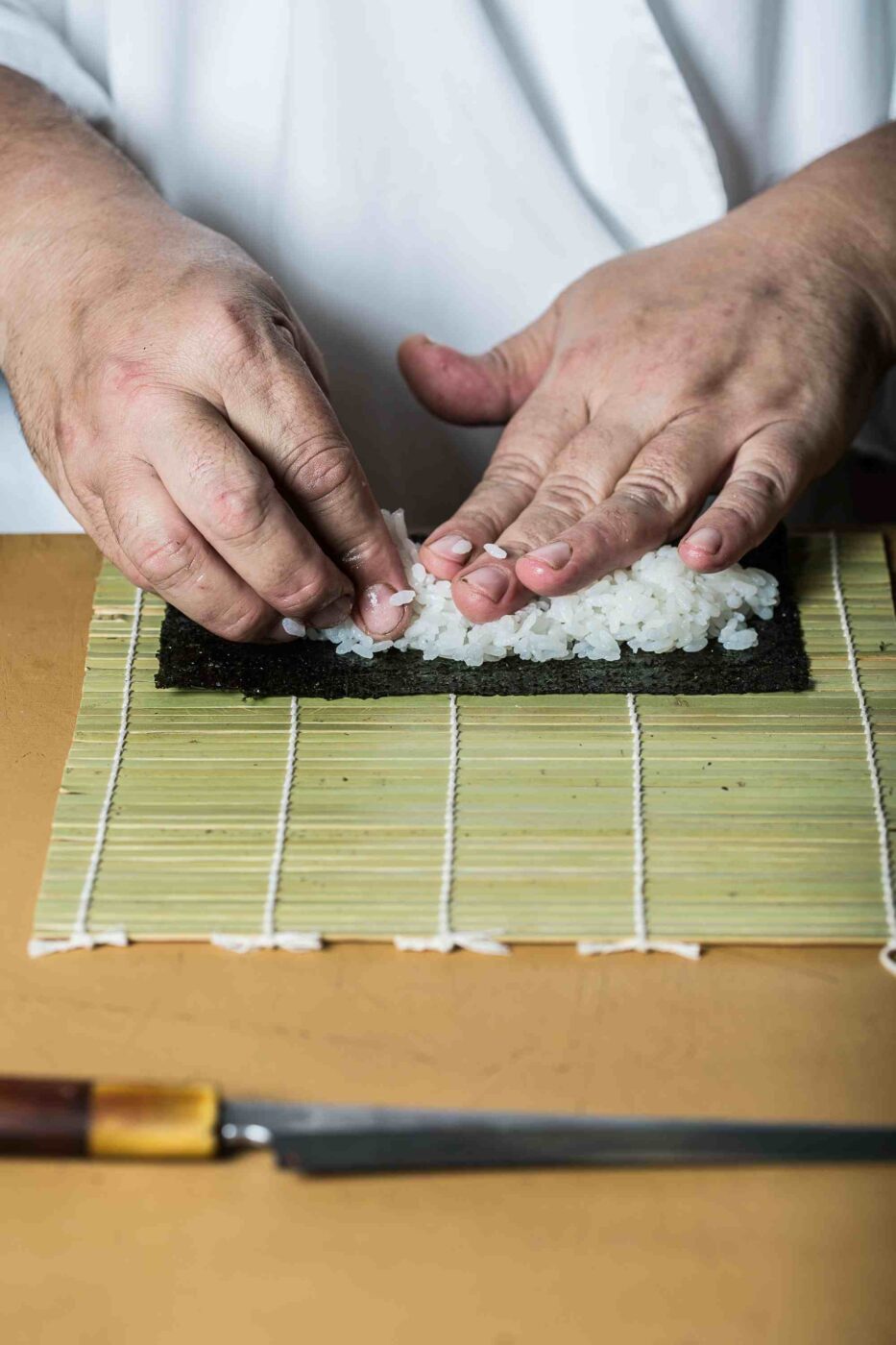
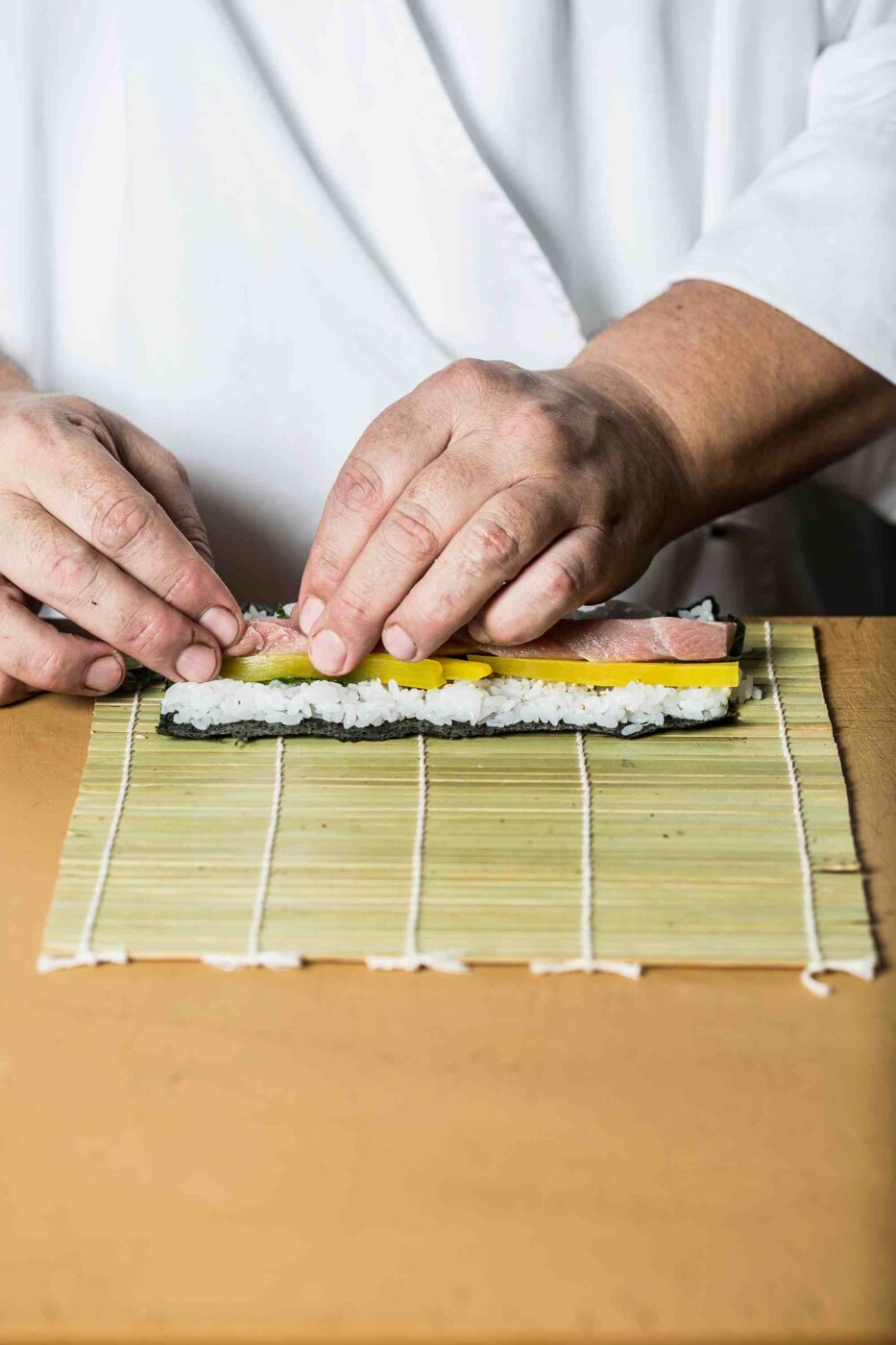
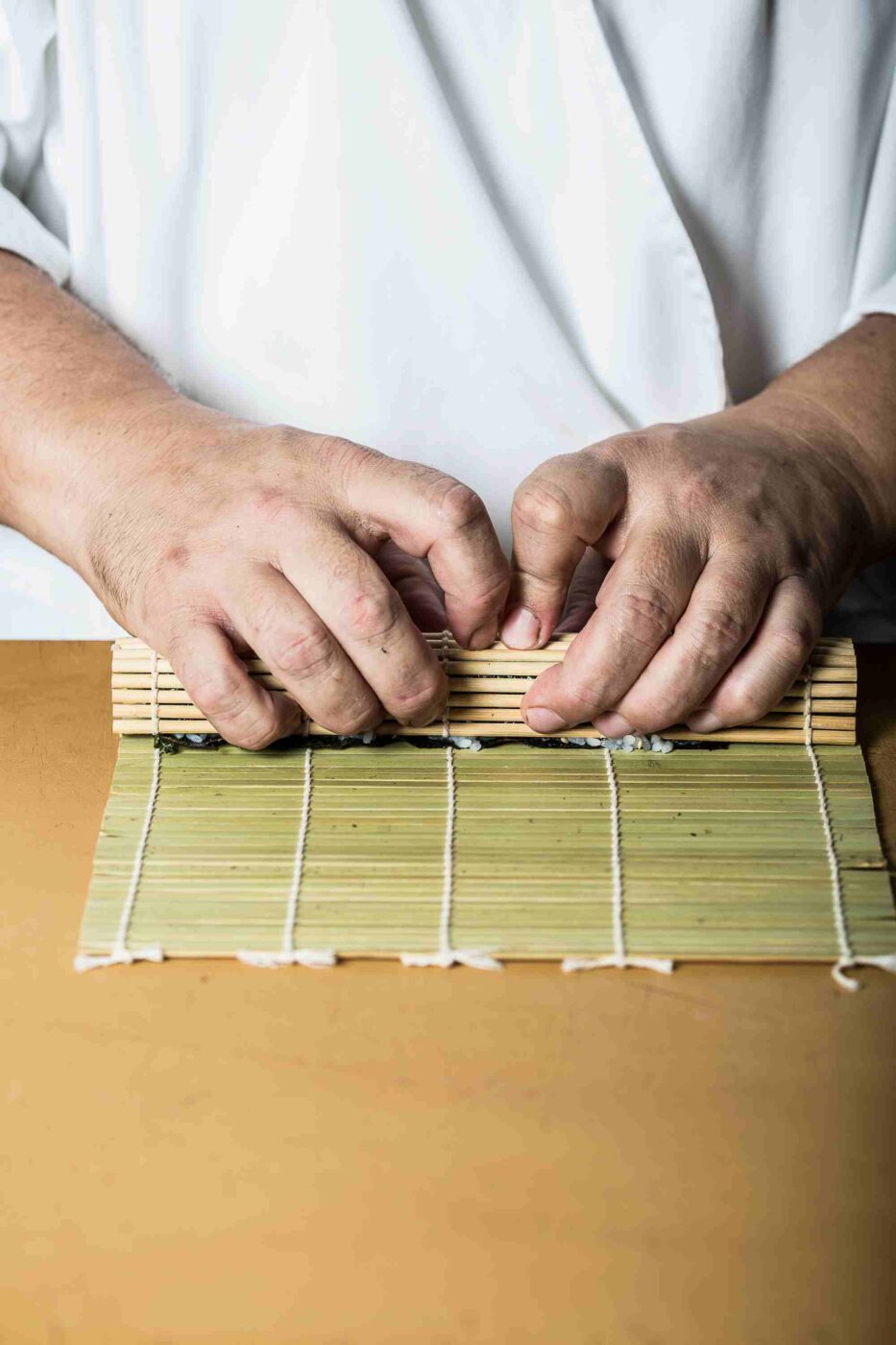
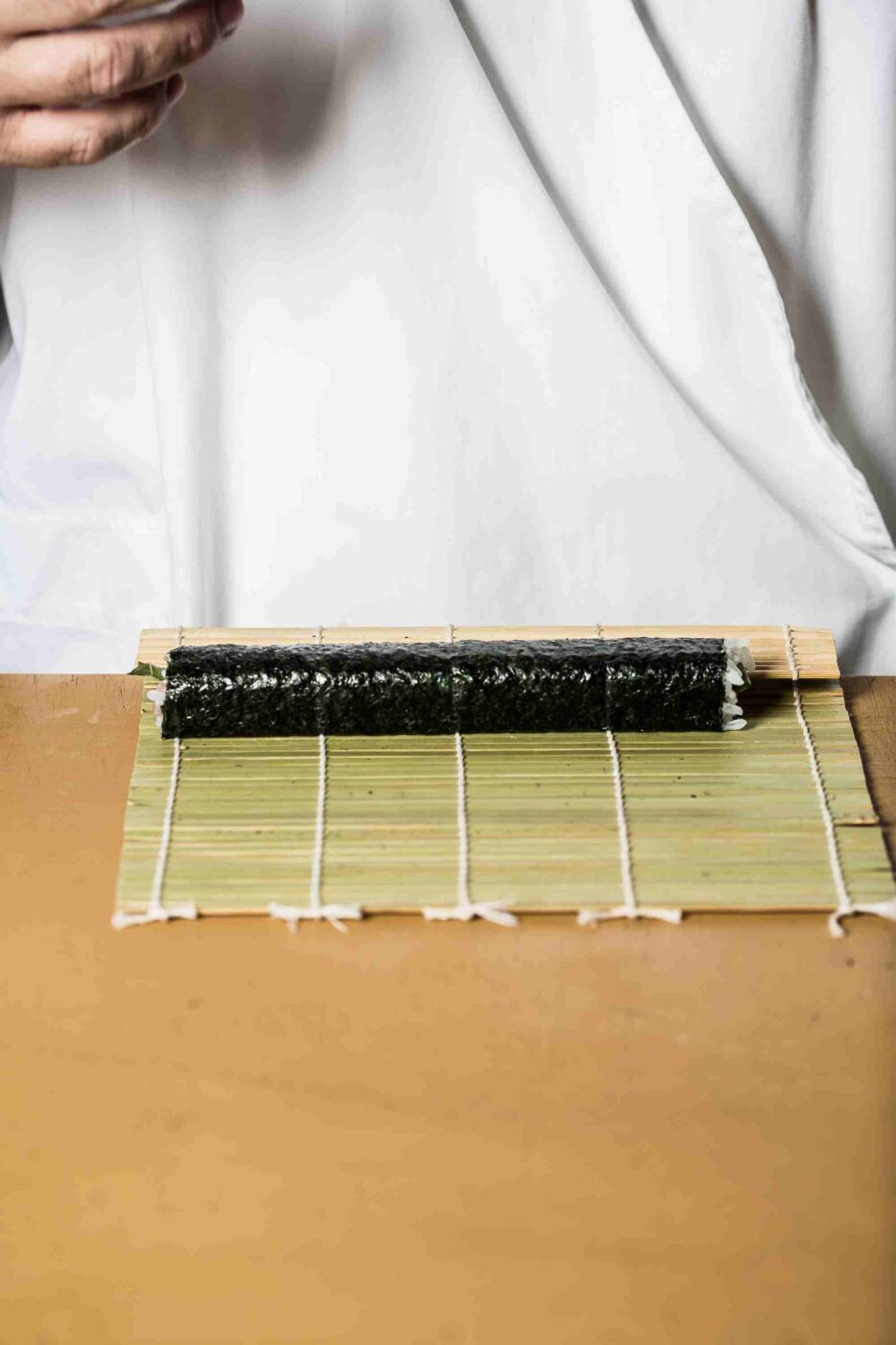
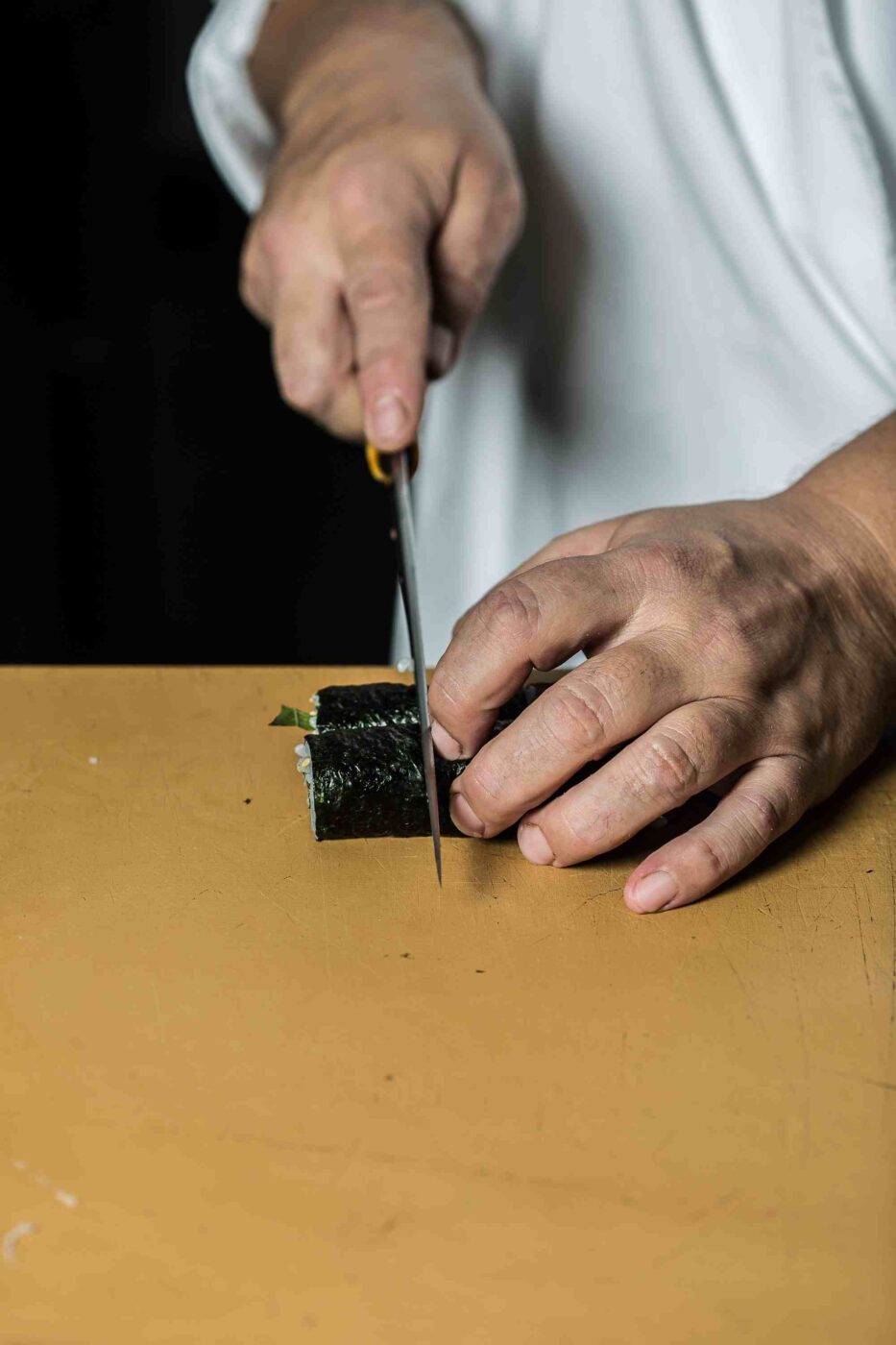
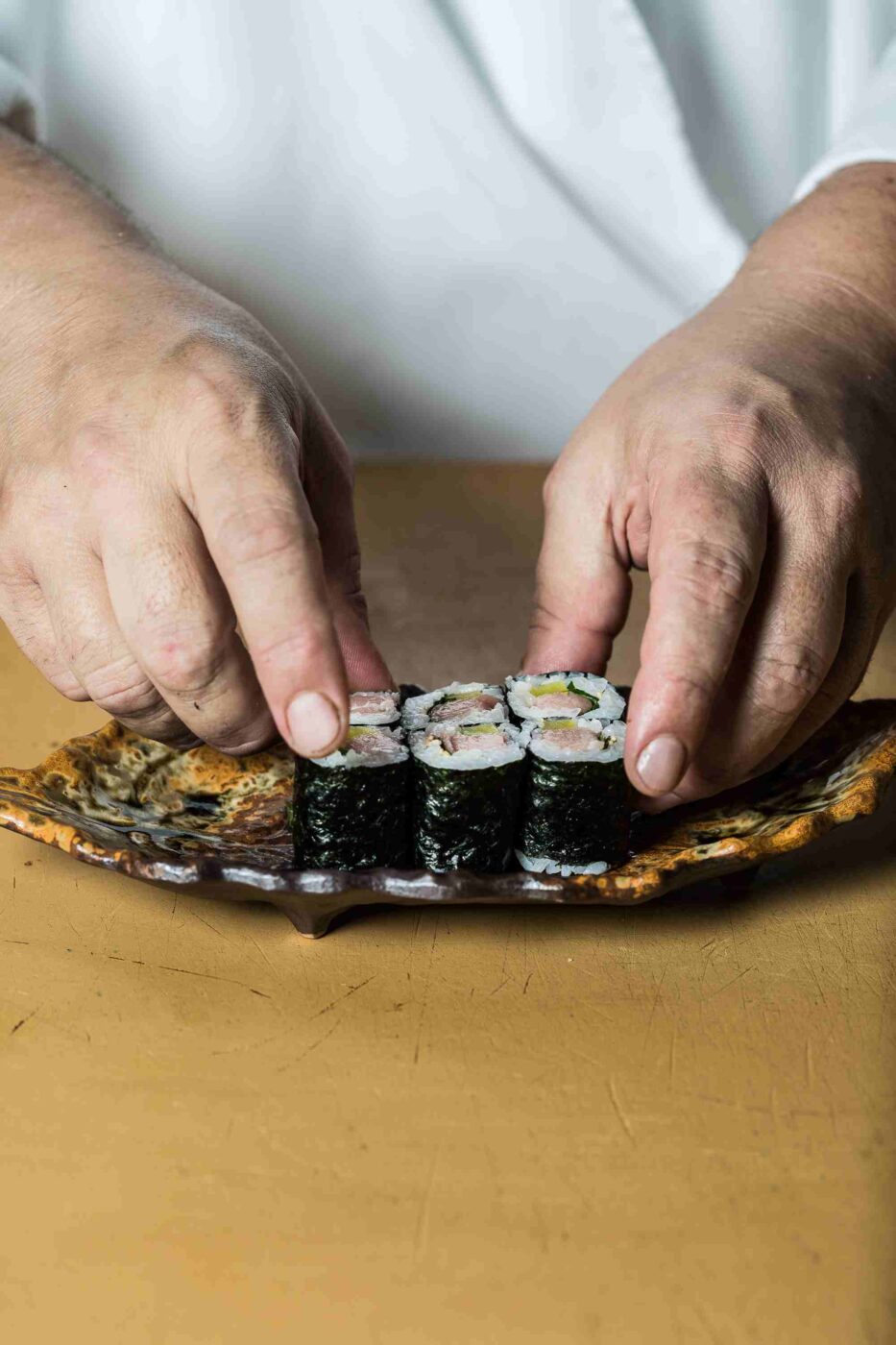
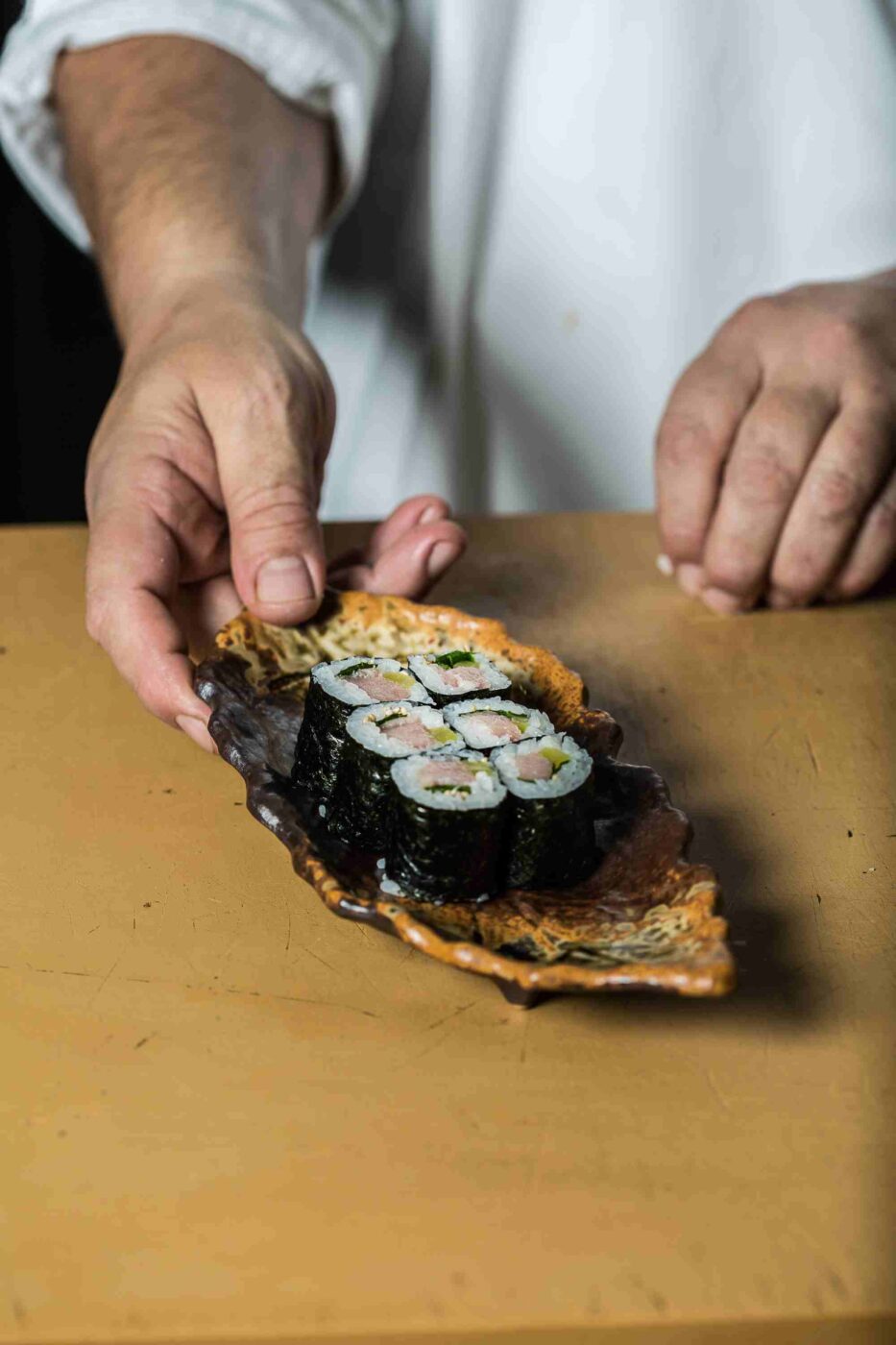
The different types of maki
However, following on from this introduction, both for those who are new to the subject and old hands wishing to refresh their ideas and lingo, we here offer something of a definition of what a maki involves, and all the existing classifications. To begin with, we have the overall concept of makimono, which ultimately covers a variety of sushi wrapped in nori seaweed. Purists also talk of makizushi or simply maki. All these terms have their roots, of course, in accordance with semantics. Makisu is the bamboo mat which is rolled up to prepare the dish, derived from a contraction of maki (which would translate as ‘little roll’) and sudare (roller blind.). And so makizushi covers the different makis we will now analyse.
In terms of size, they may be futomaki (meaning thick) or hosomaki (narrow) with half a sheet of nori seaweed, rice, and just one ingredient. This includes tekkamaki, filled with bluefin tuna akami. Tekka means red-hot metal (a clear chromatic parallel with the flesh of our titan of the seas), and the dish was apparently invented in tekkaba or gambling halls, full-blooded and somewhat sordid venues, amid a haze of smoke and forbidden dealings. The pieces of tekkamaki symbolise the dots of the dice against a white background.
In terms of shape, they can also be categorised as temakis (conical, 10 cm long), uramaki (as you know, with the seaweed on the inside, the rice outside, created to prevent delicate Western pallets from rejecting the texture of seaweed), gunkanmaki, ultimately a nigiri wrapped in nori seaweed, with a shape recording the fuselage and deck of a battleship, with a protruding ingredient, such as bluefin tuna loin topped with uni (sea urchin) shirako, ikura roe, toriko and masago. “From a historical perspective, chimakis are also of interest: rolls of sticky rice cake wrapped in bamboo leaves, tied with reed stalks, and eaten by children at a spring festival in their honour. They are filled with cucumber and cut into eight pieces. They look like a conical fajita,” explains Juan Bautista García of Rocío Tapas y Sushi, a humble shrine of pilgrimage in Malaga.
North American makis?
What about the famed California rolls, flooding sushi bars in the USA, like a regimented army? Well, two different geniuses claim to be their inventor. One the one hand, chef Hidekazu Tojo, from Tojo in Vancouver (who apparently drew his inspiration from a tuna salad he had tried in Mexico), and on the other Ichiro Mashita, from Tokio Kaikan, Los Angeles. As confirmed by the Oxford Encyclopedia of Food and Drink in America, in 2004. “California rolls, comprising avocado, imitation crabmeat and mayonnaise, covered in rice and with sesame seeds on the outside, are an excellent example of Japanese-American fusion food. They were invented by Japanese chefs in Los Angeles in the Seventies, for Americans reluctant to eat raw fish. California Rolls became particularly popular on Japanese restaurant menus in the United States in the 1980s, and ended up being exported to Japan, although many sushi purists reject them as not being traditional Japanese food”. As it happens, my native country imported these California versions, but they are known as kashumaki.
There are plenty of tales to tell, then, making the maki unquestionably one of the most versatile and popular forms of sushi. And it also proves the perfect suffix. All it takes is to place an ingredient in front (such as negitoro, toro and chives) to create both the word (negitoromaki) and a delicious morsel which never stops evolving…
